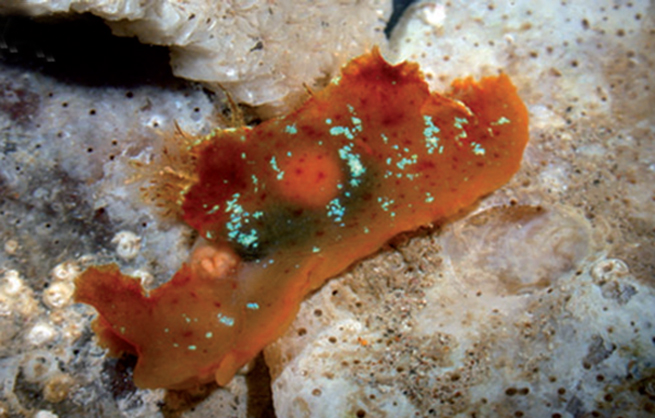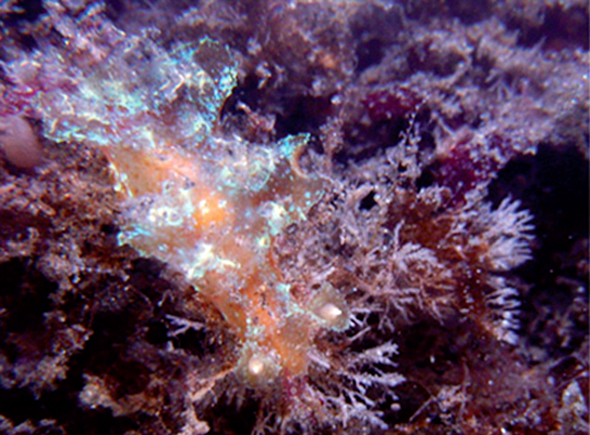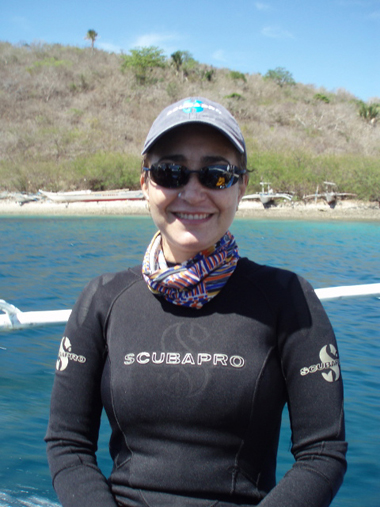 |
Notobryon panamica
Image courtesy of Ali Hermosillo McKowenMexico, Jalisco, Bahia de Banderas, Los Arcos,
Mexico, Jalisco, Bahia de Banderas, Mismaloya
 |
Notobryon panamica Pola, Camacho-Garcia & Gosliner. 2012 Members of the family Scyllaeidae have always been a challenge for me. In the genus Notobryon for example, Notobryon wardi has been used for species occurring in tropical seas around the world. A paper by Marta Pola, Yolanda Camacho-Garcia and Terry Gosliner has shed light on this group and using molecular data, separated the tropical species group into four species. Notobyron panamica is described in this paper for specimens occurring in Panama, Costa Rica up to Jalisco, Mexico, where this specimen was photographed. Ali and I called this species Notobryon wardi in Eastern Pacific Nudibranchs. It's good to know that this correction has been made. Notobyron panamica is obviously named for its occurrence in Panamic Biogeographic Province. Similar in variable coloration to N. wardi (Courtesy of Bill Rudman's Sea Slug Forum), it unfortunately can only be distinguished from the other four species by dissection of the male reproductive system and by molecular analysis. The good news is that Pola and party offer molecular evidence that the Indo-Pacific, South African, and eastern Pacific populations are distinct and we can use their geographical ranges to apply their correct scientific name. If you insist upon hanging your hat on some external differences - The dorsal processes of the eastern Pacific and Indo-Pacific specimens are larger than the ones from South Africa. N. wardi and N. panamica from the eastern Pacific, the coloration is mostly translucent yellow or brownish to orange. Moreover, the lamellae of the rhinophores are pale brown with iridescent green or blue in the Indo-Pacific species whereas the lamellae and their tips are translucent in N. wardi and N. panamica. I'm not sure this helps all that much, but now we know who's who. |
Reference:
Behrens, D. W. & A. Hermosillo. 2005. Eastern Pacific nudibranchs. A guide to the opisthobranchs from Alaska to Central America. Monterey, CA. Sea Challengers.
Pola,M., Y. E. Camacho-Garcia & T. M. Gosliner. 2012. Molecular data illuminate cryptic nudibranch species: The evolution of the Scyllaeidae (Nudibranchia: Dendronotina) with a revision of Notobryon. Zoological Journal of the Linnean Society 165(2): 311-336.
Sammamish, WA 98074
Jan., 2021
Send Dave email at davidwbehrens@gmail.com
Ali Hermosillo McKowen on location in the Philippines
 |
Ali needs very little in the way of introduction to readers of this site. She has been featured in many of the Branch of the Week (BOW) presentations through the years. Diving with Ali can be infectious assuming you can keep up with her. If you didn't have an appreciation for our friends the sea slugs before diving with her, you will certainly reach quantum levels in that regard as Ali is all consuming in her quest to photograph and document their behavior! In the last few years she even acquired her Doctorate in Opistobrach Studies so her enthusiasm certainly knows no bounds. She has the material for putting together field guides for both the Milne Bay region of PNG and also Anilao in the Batangas area of the Philippines. Let's encourage her when time permits to make that happen! As a side note Ali has posted ID's with her Flicker postings from both areas. The links can be seen in the left frame of this site. Very worth while to visit for those who are seeking to put names together with images. What more can be said, Ali is the greatest! Send Ali email at aliciahmckowen@gmail.com
Michael Miller |

|
